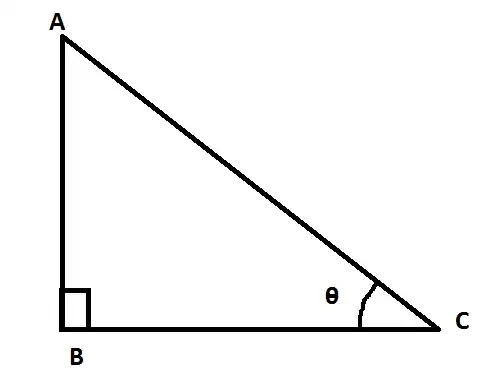To determine the value of sin or cosine, we draw perpendicular from the end of the radius (or the point on the circle) to x axis. and we calculate from the right angle formed in this way.
Does not matter whether the angle is acute or obtuse.
Suppose the location of the point (on the circle) is (x,y). The $\sin\theta$ is determined by the ratio of the y and radius of circle (r) which is $\dfrac{y}{r}$, always.
Here we need to take the magnitude as well as sign of y, r has only magnitude (distance, scalar). Similarly true for $\cos\theta$ which is $\dfrac{x}{r}$
Suppose the point is on second quadrant. We can express this as $\sin(\pi/2+\theta)$, which can be written as
$\sin(\pi/2-(-\theta) )$ and as per identity it should be equal to $\cos(-\theta)$, where the point falls in fourth quadrant. We an readily confirm this is true (both magnitude and sign matches (both are positive) ).
Suppose the point is on third quadrant. We can express this as $\sin(\pi+\theta)$, which can be written as
$\sin(\pi/2-(-(\pi/2+\theta)) )$ and as per identity it should be equal to $\cos(-(\pi/2+\theta))$, where the point falls in (again) third quadrant. We an readily confirm this is true (both magnitude and sign matches (both are negtive) ).
Suppose the point is on fourth quadrant. We can express this as $\sin(3\dfrac{\pi}{2}+\theta)$, which can be written as
$\sin(\pi/2-(-(\pi+\theta)) )$ and as per identity it should be equal to $\cos(-(\pi+\theta))$, where the point falls in second quadrant. We an readily confirm this is true (both magnitude and sign matches (both are negtive) ).
For $\theta \gt 2\pi$ it repeats.
